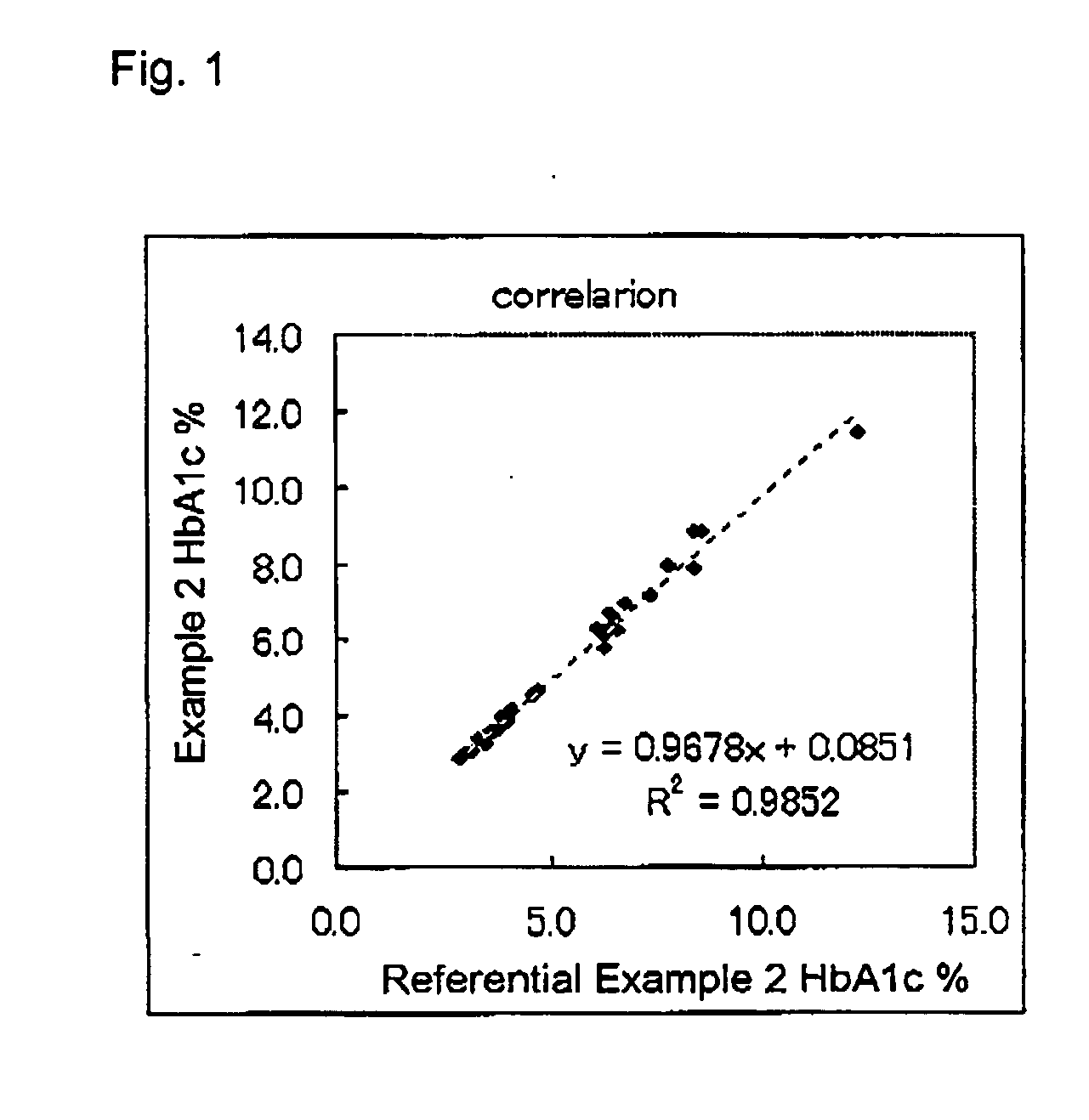Method for stabilizing leuco dye
a technology of leuco dye and leuco dye, which is applied in the field of stabilizing leuco dye, can solve the problems of low sensitivity of quantification of minor components, prone to being affected, and system exhibits, and achieves the effect of stable storage and highly sensitiv
- Summary
- Abstract
- Description
- Claims
- Application Information
AI Technical Summary
Benefits of technology
Problems solved by technology
Method used
Image
Examples
example 1
Stabilization of TPM-PS
[0048] Each of the proteases shown in Table 1 was added to a PIPES buffer (pH 6.0) containing TPM-PS (100 μM), and the resultant mixture was stored at 37° C. Subsequently, absorbance was measured at 600 nm by means of an autoanalyzer (model: 7150, product of Hitachi, Ltd.). The thus-obtained data were compared. Table 1 shows absorbance 0 hours after addition of the protease protein, and absorbance after one-week storage.
[0049] In Table 1, the term “inactivated” refers to the case where a protease is thermally treated at 70° C. for four hours before being added to the buffer.
TABLE 11 WeeklaterSolution0 Hrs later(37° C.)50 mM PIPES (pH 6)0.0170.38050 mM PIPES (pH 6) + 0.1 mg / mL Protin0.0070.17950 mM PIPES (pH 6) + 1.0 mg / mL Protin0.0060.19950 mM PIPES (pH 6) + 0.1 mg / mL inactivated0.0070.213Protin50 mM PIPES (pH 6) + 1.0 mg / mL inactivated0.0070.200Protin50 mM PIPES (pH 6) + 0.1 mg / mL Protease Type0.0060.097XXIII50 mM PIPES (pH 6) + 1.0 mg / mL Protease Type0....
example 2
Measurement of HbAlc Level
[0053] 2% Emal 20C (product of Kao Corporation)
[0054] 50 mM PIPES solution (pH 6)
[0056] 1.5 mg / mL Protin PC10F
[0057] 25 μM TPM-PS (product of Dojindo Laboratories)
[0058] 50 mM Citrate buffer (pH 6)
[0059] 10 units / mL POD (product of Toyobo Co., Ltd.)
[0060] 6 units / mL FPOX-CE (product of Kikkoman Corporation)
(1) Preparation of Hemolyzed Sample
[0061] Human blood cell samples (30 samples) were employed. The hemolyzing reagent (450 μL) was added to each of the blood cell samples (12 μL), to thereby prepare hemolyzed samples.
(2) Measurement
[0062] The reagent (1) (180 μL). was added to the hemolyzed sample (15 μL), and the resultant mixture was incubated at 37° C. for five minutes. Thereafter, the difference between absorbance at 600 nm (primary wavelength) and absorbance at 700 nm (secondary wavelength) was measured, and a hemoglobin-level-dependent measurement (samp Hb) was obtained. Subsequently, the reagent (2) (60 pL...
PUM
 Login to View More
Login to View More Abstract
Description
Claims
Application Information
 Login to View More
Login to View More - R&D
- Intellectual Property
- Life Sciences
- Materials
- Tech Scout
- Unparalleled Data Quality
- Higher Quality Content
- 60% Fewer Hallucinations
Browse by: Latest US Patents, China's latest patents, Technical Efficacy Thesaurus, Application Domain, Technology Topic, Popular Technical Reports.
© 2025 PatSnap. All rights reserved.Legal|Privacy policy|Modern Slavery Act Transparency Statement|Sitemap|About US| Contact US: help@patsnap.com

